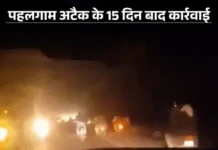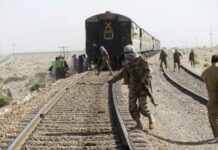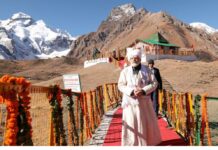The city of Ajmer, there existed a darkness that shrouded the lives of innocent school and college girls. A sinister force lurked in the shadows, orchestrating a diabolical plan to unleash a wave of fear and suffering. This was the Ajmer rape and blackmail case of ’92, a tale that sent shockwaves throughout the community.
Ajmer, where the Dargah of Khwaja Moinuddin Chishti stands tall, a dark cloud still looms over its serene landscape. It was a time when the souls of innocent girls trembled with fear, and their voices were silenced by the darkness that pervaded their lives. This tale, once hidden in the shadows, will soon come alive on the silver screen with the upcoming film “Ajmer 92,” scheduled to release on July 21.
A hundreds of girls had fallen prey to the insidious clutches of influential figures, who wielded their connections to orchestrate their vile acts. But amidst this disheartening tale, there existed a silver thread that linked some of these malevolent individuals to the heart of Silvershore’s spiritual sanctuary – the revered Sufi Dargah.
The crime
It all began in the early months of 1992, when a local journalist named Santosh Gupta stumbled upon a trail of unusual events. The school -and college-going years were lured to remote locations, where this sexually assaulted happens back to back by many men.
ADVERTISEMENT
According to the police, the fiendish scheme involved one innocent girl, coerced into becoming the bait for her unsuspecting companions. The girl was blackmailed but she kept silent using their explicit images that the rapist clicked while charge the crime.
Under the vigilant eyes of retired Rajasthan DGP, Omendra Bhardwaj, a relentless pursuit of truth began. With every step, he delicately treaded the fragile paths of the victims’ shattered souls. It was a task riddled with obstacles and challenges, for he knew that persuading these girls to come forward would be an uphill battle.
With a gentle touch and empathetic heart, he reassured them that their voices were not just heard but believed. Like guardian angels, his words of support became the beacon of hope, cutting through the darkness that veiled their truth. He listened intently, giving solace to their aching hearts, patiently unraveling the hidden depths of their harrowing experiences.
Months stretched into years as the wheels of justice turned steadily, uncovering a web of depravity that entangled the town. The investigation painstakingly pieced together fragments of shattered innocence, revealing the true faces of those who wore masks of piety.
Finally, the day of reckoning arrived. In a thunderous courtroom, a total of 18 men stood accused, their pretenses of righteousness shattered beyond repair. Among them, families from the influential Khadims, whose esteemed position had been defiled by the actions of their own kin. Descendants of the Sufi saint, once respected and revered, now cast in the shadow of disgrace.
A total of 18 men were charged in connection with a series of heinous crimes that had shocked the entire town. The web of deception and corruption extended its sinister tendrils, ensnaring even those who were expected to uphold justice. Among these men stood two figures who held prominent positions in the community – Farooq and Nafis Chishty. They were known not only for their influential ties but also for their involvement in local politics, which had elevated them to the status of pseudo-celebrities.
Gupta notes that it was the hit that these men enjoyed and openly crass that helped them in capturing their victims.
Their leader, a man named Farooq, possessed an uncanny charm that masked his sinister intentions. With calculated precision, he began his diabolical plot by selecting his prey from the prestigious halls of Sophia Senior Secondary School. His eyes fell upon a girl, full of innocence and untainted by the ways of the world.
A continuing ordeal for survivors
If details comess in publicly, then Ajmer found itself on the bound of clutter. On one side, stood a large majority of the accused men, bearing the identity of the Muslim community. On the other side, a wave of victims, predominantly Hindu, wore their pain and suffering as battle scars. The battleground was no longer confined to the physical realm but seeped deep into the emotions of the city dwellers.
The police, determined to uncover the truth, tirelessly pieced together the shattered fragments of evidence. Their investigations revealed that there could potentially be between 50 and 100 victims, yet only a handful had the courage to step forward and testify. Their voices were the threads that held the fabric of justice together, and yet, their numbers were disappointingly scarce.























































